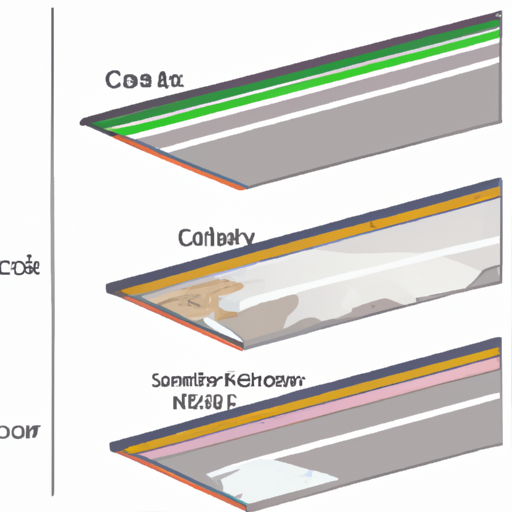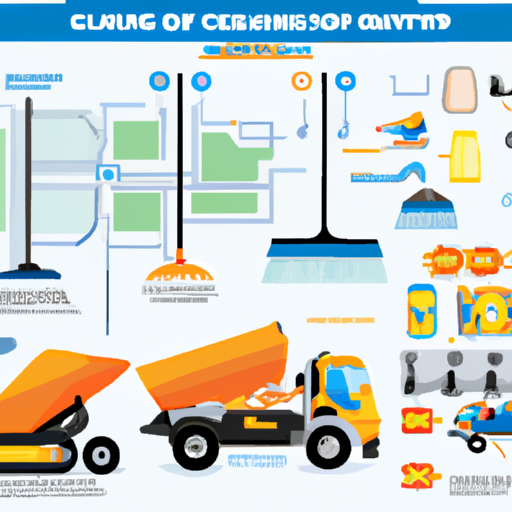This all-encompassing guide offers a comprehensive look into the world of road cleaning. We delve into the nitty-gritty of the processes, equipment, techniques, and safety measures needed to efficiently clean roads. Whether you're a professional, a municipality worker, or just a curious individual, this guide is your resource for everything road cleaning.
The Basics: What is Road Cleaning?
Road cleaning refers to the process of removing debris, dirt, and other unwanted materials from roads and highways. It is a crucial maintenance activity that ensures the safety and functionality of roadways. Road cleaning involves various techniques and equipment to effectively eliminate hazards and maintain a clean and smooth surface for vehicles and pedestrians. This essential task helps to enhance visibility, prevent accidents, and prolong the lifespan of roads. Whether it's sweeping away leaves, clearing away debris after a storm, or removing litter, road cleaning plays a vital role in maintaining a clean and safe transportation infrastructure.
An illustration showing the different layers of a road, highlighting the importance of cleaning
"The Right Tools for the Job": Equipment for Road Cleaning
Road cleaning requires the use of specific equipment designed to efficiently remove debris and maintain the cleanliness of road surfaces. One of the most common tools used is the road sweeper, which comes in various sizes and types. Mechanical sweepers are equipped with rotating brushes and suction systems that effectively collect and remove dirt, leaves, and other debris. These sweepers can be operated manually or mounted on vehicles for larger-scale cleaning operations. Additionally, power blowers are often used to clear away loose debris and leaves from sidewalks and road edges.
Another essential piece of equipment for road cleaning is the pressure washer. These high-pressure water systems are used to remove stubborn stains, oil spills, and gum from the road surface. They are particularly effective in cleaning parking lots, driveways, and other heavily trafficked areas. In addition to sweepers and pressure washers, road cleaning crews may also use vacuum trucks to collect larger debris, such as branches or construction waste. These trucks have powerful suction capabilities, making them ideal for thorough cleaning in areas where traditional sweepers may not be sufficient.
In recent years, technology has also played a significant role in road cleaning. Autonomous or robotic sweepers have been developed to automate the cleaning process. These advanced machines use sensors and cameras to navigate roads and efficiently sweep away debris. This not only improves the speed and effectiveness of road cleaning but also reduces the need for manual labor and enhances worker safety.
An infographic detailing various equipment used in road cleaning and their specific functions
Safety First: What are the Key Safety Measures in Road Cleaning?
When it comes to road cleaning, safety should always be the top priority. There are several key safety measures that should be followed to ensure the well-being of the workers and the public. First, it is crucial to have proper training for road cleaning personnel. They should be educated on the safe operation of equipment, proper use of personal protective equipment (PPE), and understanding potential hazards on the job.
Additionally, implementing proper traffic control measures is essential to protect both the road cleaning crew and passing motorists. This includes using signage, cones, and barriers to redirect traffic and create a safe work zone. It is important to communicate clearly with drivers and provide ample warning of the cleaning operations.
Another important safety measure is the use of high-visibility clothing and reflective gear. This helps to ensure that road cleaning workers are easily visible to drivers, especially during low light conditions or at night. Brightly colored vests, jackets, and helmets should be worn at all times to prevent accidents and improve visibility.
Regular maintenance and inspection of cleaning equipment are also crucial for safety. Ensuring that the equipment is in good working condition reduces the risk of accidents or breakdowns during operations. Regular checks should be conducted to identify any potential issues and address them promptly.
Road Cleaning Resources:
| Resource | Equipment | Techniques | Safety |
|---|---|---|---|
| Pressure Washers | Brushes, Brooms, Shovels | Scrubbing, Sweeping | Goggles, Gloves, Face Masks |
| Cleaning Agents | Vacuums, Dustpans | Spraying, Blasting | Respirators, Protective Clothing |
| Litter Pickers | Garbage Bags, Containers | Hand-picking, Sorting | High-Visibility Vests, Safety Boots |
| Drain Cleaners | Sewer Rods, Drains | Flushing, Unblocking | Gauntlets, Coveralls |
Road cleaning is a critical task that ensures safety, improves aesthetics, and promotes the longevity of road surfaces. With this guide, we hope to have equipped you with the necessary knowledge and techniques to undertake this task more efficiently. Remember, a clean road is not just a road; it's a reflection of a vibrant and responsible community.



